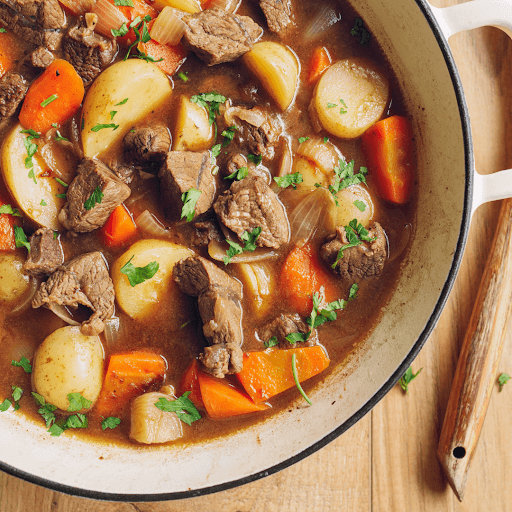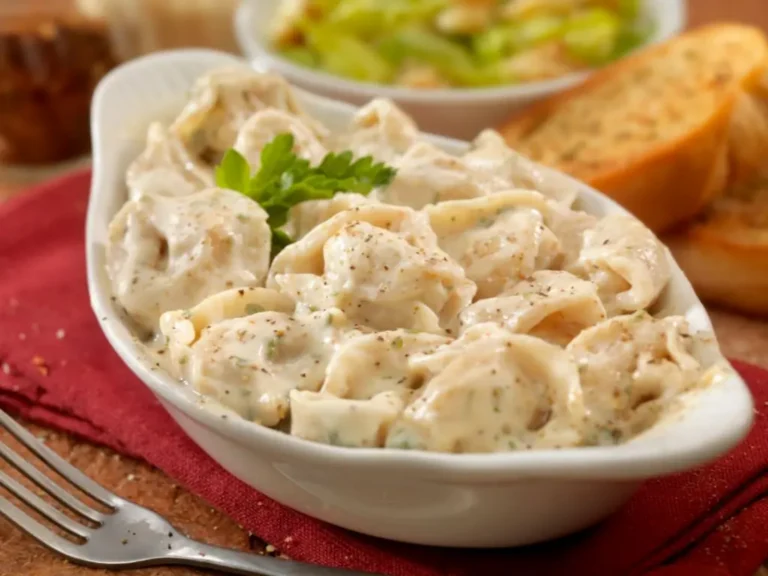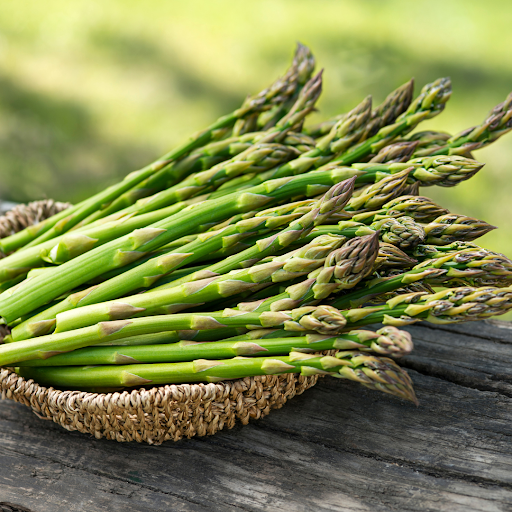Beef stew is my go-to comfort food on a cold day, and I love making it because it’s hearty, flavorful, and perfect for feeding a crowd.
Over the years, I’ve learned a lot of little tricks that have helped me turn a simple stew into something truly mouth-watering.
Today, I’m sharing my best tips for adding more flavor to beef stew—whether you’re making a classic beef stew recipe, experimenting with new flavors, or cooking in a slow cooker.
Let’s dig into how to take your stew to the next level!
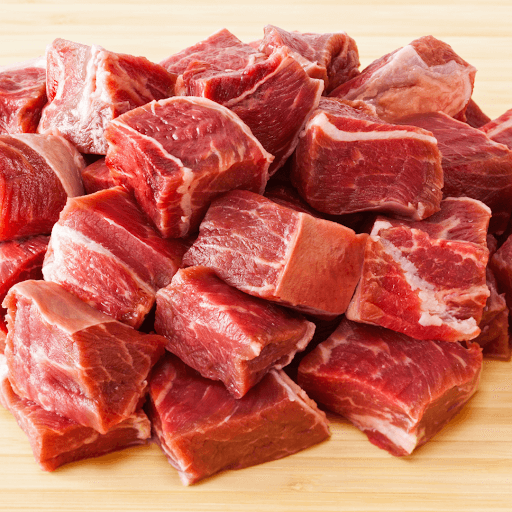
1. Choose the Right Cut of Meat
I used to think any kind of beef would work for stew, but choosing the right cut of meat makes all the difference. You want a flavorful cut that will become tender after a long cooking time.
- Chuck roast is my top choice because it has just the right amount of fat and connective tissue that breaks down and gives you that fall-apart tenderness.
- Short ribs are another option if you want a richer flavor, but beef stew meat works just as well when I don’t have time to cut the beef myself.
2. Brown the Meat for Extra Flavor
One of the biggest game-changers for me was learning how important it is to brown the beef before adding it to the stew. This step is crucial for building that deep, complex flavor.
- I start by heating olive oil in a large Dutch oven over medium-high heat.
- Make sure to pat the meat dry before adding it to the pot, and don’t overcrowd the pan, or the beef will steam instead of brown.
- I use a wooden spoon to scrape up all the flavorful browned bits at the bottom of the pan—they add so much to the stew’s flavor.
3. Build a Flavorful Base
After browning the meat, I love building flavor with aromatics and seasonings.
- I always start with yellow onions (or white onions) and garlic to create a fragrant base.
- Then, I like to add a couple of bay leaves and a spoonful of tomato paste for richness.
- Don’t forget to sauté the onions and garlic in the same pot you browned the beef in—that way, you pick up all those caramelized flavors.
4. Choose the Right Liquids
The liquid in your stew is just as important as the meat. I like to use a combination of broth, wine, and a few secret ingredients to deepen the flavor.
- Beef broth or beef stock is my go-to base for the stew. If I don’t have any homemade, store-bought stock cubes work too.
- For extra depth, I add a splash of red wine like cabernet sauvignon or Pinot Noir. About a cup of liquid is enough to enhance the flavor without overpowering the stew.
- Worcestershire sauce and even a dash of soy sauce or fish sauce can give the stew a savory, umami boost. I’ve also experimented with a little balsamic vinegar, which adds a subtle sweetness that balances everything out.
5. Season Throughout the Cooking Process
Seasoning is one of the most important parts of making a delicious stew. I’ve learned to season the beef first, then add a little more seasoning as I build the stew.
- I add salt and pepper to the beef before browning it, and then taste and adjust the seasoning at the end of the cooking process.
- For spices, I love using smoked paprika for a subtle smoky flavor. A pinch of brown sugar can also add a nice balance to the savory flavors.
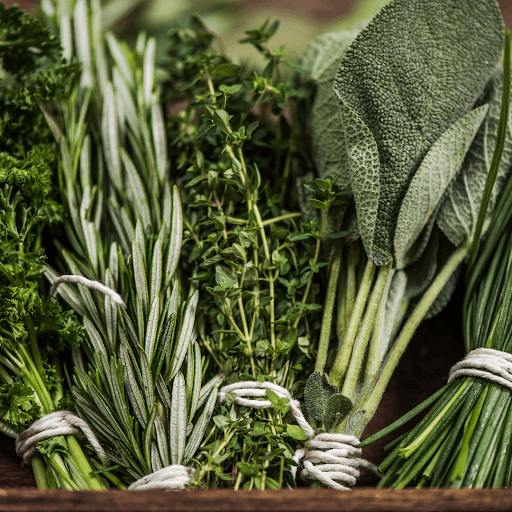
6. Don’t Forget Fresh Herbs
While dried herbs like bay leaves and thyme are great for the long cooking process, I like to finish my stew with fresh herbs for a pop of brightness.
- Parsley, thyme, and even a little bit of rosemary are my favorites.
- I add them during the last 10 minutes of cooking to keep them fresh and vibrant.
7. Add Vegetables for Texture and Flavor
Adding vegetables to my stew not only makes it heartier but also adds extra layers of flavor and texture. I always include root vegetables like carrots and Yukon gold potatoes, but I like to mix it up too.
- Sweet potatoes are great for a touch of sweetness.
- I love adding green beans or even fresh pearl onions for more texture.
- Don’t forget to cut the vegetables into small pieces so they cook evenly and soak up all the flavor from the broth.
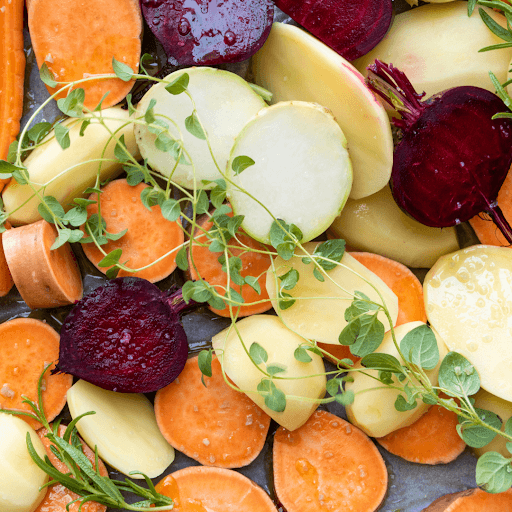
8. Let It Cook Low and Slow
I’ve found that slow cooking is key to making sure the beef is tender and the flavors meld together. Whether I’m using a slow cooker, crock pot, or stovetop, I always give the stew plenty of time to simmer.
- On the stovetop, I cook it on medium heat for at least 2-3 hours.
- When using the slow cooker, I set it on low for 6-8 hours. The longer it cooks, the more the beef breaks down and becomes tender.
9. Consider a Secret Ingredient
Over time, I’ve picked up a few secret ingredients that can really enhance the flavor of beef stew.
- A little bit of red wine vinegar or lemon zest adds a bright acidity that balances the richness.
- For an umami punch, I sometimes add a dash of soy sauce or fish sauce.
- I’ve even tried adding a spoonful of maple syrup or brown sugar for a touch of sweetness that complements the savory stew.
10. Thicken with Care
I used to add too much flour to my stew, and it always ended up too thick and heavy. Now, I know to be cautious when it comes to thickeners.
- I only add a little purpose flour or cornstarch, and I whisk it with cold water first to avoid lumps.
- Sometimes, I skip the flour altogether and just let the stew reduce naturally, which gives it a more concentrated flavor.
11. Taste and Adjust
This might sound like common sense, but tasting throughout the process is crucial for getting the best results. I taste the stew after about an hour and adjust the seasoning as needed.
- If the stew tastes too rich, I add a little more acidity with balsamic vinegar or a squeeze of citrus fruit juice.
- If it’s too acidic, a bit of brown sugar helps balance things out.
12. Store It Right
Beef stew is one of those dishes that tastes even better the next day, so I always make extra. Proper storage is key to keeping the flavors fresh.
- I store the stew in an airtight container and refrigerate it for up to four days.
- If I freeze it, I make sure it’s completely cool before transferring it to storage containers. It freezes beautifully and lasts for about three months.
13. Experiment with Different Flavor Boosters
One of the most exciting parts of making beef stew is experimenting with different flavor boosters to find your own perfect combination.
Over time, I’ve learned that there are endless ways to tweak and elevate the flavors depending on my mood or what ingredients I have on hand.
- Red wine is a common choice, but don’t be afraid to experiment with different types. A robust cabernet sauvignon will give the stew a deep, rich flavor, while a lighter pinot noir offers a more subtle complexity.
- Another great trick is to use bacon grease instead of olive oil when browning the meat. It adds a smoky, savory flavor that gives the stew a whole new dimension.
- For a slight sweetness and extra depth, I occasionally stir in a little balsamic vinegar or even a dollop of red wine vinegar at the end of cooking. This helps brighten the stew’s richness and adds a balanced, tangy contrast.
14. Finish with Citrus for a Bright Touch
One thing I’ve come to love is finishing my stew with a bit of citrus. A squeeze of lemon zest or a splash of citrus fruit juice right before serving brightens the flavors and balances out the heaviness of the meat and vegetables.
It’s a small, often overlooked trick, but it makes a noticeable difference in the overall flavor and keeps the stew tasting fresh, even after hours of cooking!
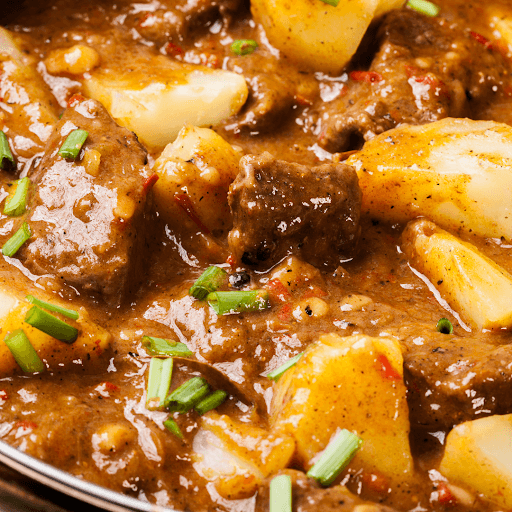
Making a flavorful beef stew is all about layering your ingredients and taking the time to build a deep, rich flavor.
Whether it’s choosing the right cut of beef, browning it properly, or adding some secret ingredients, these tips have helped me create a delicious beef stew that always hits the spot
I hope these tips inspire you to make your own stew full of tender beef, vegetables, and plenty of flavor. Happy cooking!

